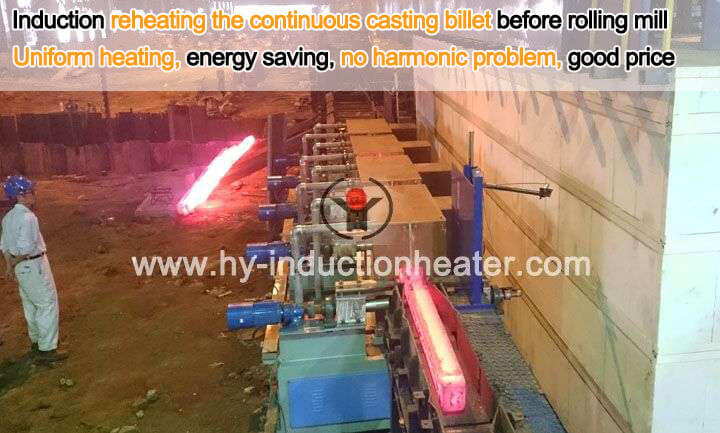Introduction of billet induction heating and magnetic induction heating principle
The heat source used for heating the billet before extrusion is coal, diesel, electricity, gas and natural gas. Now a new heating process, magnetic current heating, has been developed in the world. In fact, it can also be classified as electric heating. Compared with the conventional AC induction heating process, billet induction heating furnace has many advantages.

Principle of conventional induction heating technology for billet
Conventional induction heating technology is to place a conductive material such as an extruded ingot in a changing magnetic field for a certain time and it will be heated. The electromagnetic coil of the conventional induction heater is copper. The ingot is located in the coil. When alternating current is transported to the coil, the coil will produce a magnetic field which changes direction. The magnetic field will cause the ingot to produce an induced eddy current. According to Joule’s law, the ingot material will produce heat with resistance.
If the induction coil and ingot are heated by this method, there will be electric loss. To avoid the melting of the coil, the copper tube must be made and cooled by water. When AC current induction heating is used, the heat loss of the coil copper tube is the heat carried away by the cooling water, which is the main reason for the low thermal efficiency. The magnitude of this loss depends on the ratio of the resistance of the copper coil to the material resistance of the billet. When the conventional AC current induction heater is used to heat aluminum or copper billets, the thermal efficiency is 50%~60%.
The conventional induction heating method has some unsatisfactory aspects to be improved. For example, the AC induction heater uses a frequency of 50 Hz to 60 Hz alternating current. The induced eddy current generated in the heated ingot is due to the skin effect. The density of the surface current is high and the temperature is high. It takes a period of time for the ingot to be heated to the required temperature. The temperature distribution is uniform. At the same time in actual production, different batches of ingot size, alloy composition is always changing, that is power, so it is necessary to adjust some parameters of conventional induction billet heater at any time. In addition, the conventional AC induction heater needs medium voltage power supply and reactive voltammetry (VAR) compensation, which complicates the device and increases investment, such as large capacitor equipment is needed.

Principle of DC magnetic heating technology for billet
Compared with the conventional AC induction billet heater, the main advantages of DC magnetic heater for billet are: high energy efficiency, faster heating speed, more uniform temperature, precise control of temperature and process, no need for large water cooling system, no need for complex power supply, no need for reactive voltammetry (VAR) compensation system and no time-consuming to adjust.
The DC magnet coil of the billet magnet current heater is wound with a superconductor, which can conduct electricity without resistance, that is, no energy loss when cooled to low temperature.
Forever large power steel billet induction heating furnace development
Forever is a high-tech enterprise which has been involved in the research, development and manufacture of induction heating equipment earlier in China. It has manufactured and completed the first 7500KW continuous heating for rolling rebars and 4000KW induction billet heater for rolling steel balls. The energy-saving effect is obvious. In recent years, high-power equipment in the factory has realized PLC automatic control, saving labor costs and improving work efficiency.

Overseas manager: Tom Wang
Email:tom@foreverfurnace.com
Phone: 0086-13303078975(whatsapp, wechat,line)
Specialist of induction heating equipment is glad to be your partner in the field of induction heating.
Post time: 08-23-2018




